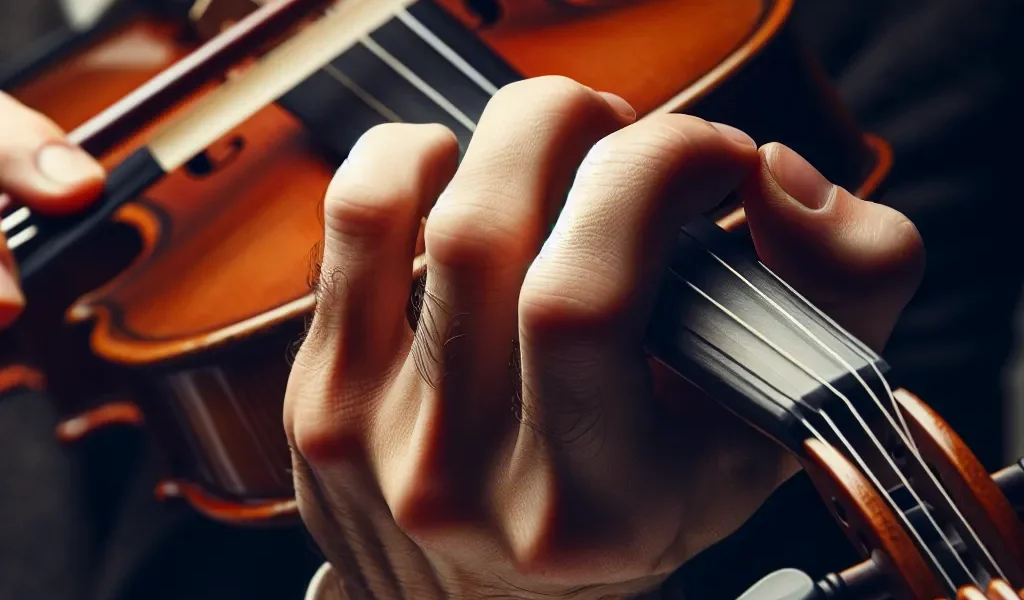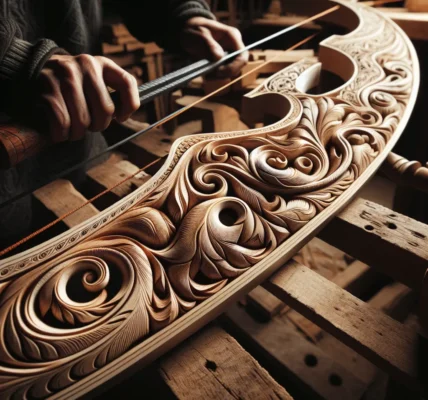Understanding Bow Grip and Pressure
Understanding bow grip and pressure is crucial for string instrument players seeking to master the art of playing with finesse and control. The bow grip forms the foundation of a player’s technique, directly influencing the tone, dynamics, and articulation produced. It is essential to maintain a relaxed yet firm grip on the bow, ensuring optimal control and precision during performance.
String players must strive for a balanced and natural bow grip, avoiding excessive tension in the fingers and hand. The thumb and the first two fingers play a primary role in supporting the bow and determining the pressure applied to the strings. The thumb should remain slightly bent and act as a pivot point, allowing the fingers to guide the bow with flexibility and dexterity.
Effective control of bow pressure is achieved through a combination of arm weight, finger strength, and wrist flexibility. By mastering the nuanced variations in pressure, musicians can extract a rich palette of tones from their instruments, ranging from delicate whispers to powerful, resonant notes. The ability to modulate bow pressure seamlessly enables players to express a wide range of musical emotions and dynamics, adding depth and sensitivity to their performances.
Developing a deep understanding of bow grip and pressure requires dedicated practice and mindful attention to subtle nuances. By honing these foundational techniques, string players can elevate their playing to new heights of expressiveness and artistry, captivating audiences with the depth and beauty of their musical interpretations.
Developing Control and Precision
Mastering the bow is a crucial aspect of playing string instruments, requiring a combination of skill, control, and precision. Developing control and precision in bowing technique is essential for producing a rich, dynamic sound and mastering the nuances of expression in music. One of the key elements in developing control and precision is understanding the proper bow hold. The bow should rest between the first and second joints of the fingers, allowing for fluid movement and control. The thumb provides support and counterbalance, contributing to the overall stability of the bow hold.
Additionally, mastering the bow requires a keen focus on consistent bowing pressure. Players should practice varying the pressure applied by the bow to the strings to produce a range of dynamics and tones. Developing a keen sense of control over the bow’s pressure enables musicians to express the subtle nuances within the music, bringing out its emotional depth and complexity.
Furthermore, precise bowing techniques, such as bow placement and angle, are essential for achieving clarity and accuracy in sound production. Understanding how bow placement and angle affect the tonal quality and articulation of notes is fundamental to developing a refined and polished sound. Practicing scales, etudes, and specific bowing exercises can greatly contribute to honing these techniques, ultimately leading to greater control and precision in bowing.
In conclusion, mastering the bow is a continuous journey that demands dedication and disciplined practice. Developing control and precision in bowing technique is a pursuit that requires attention to detail and a commitment to continual improvement. By focusing on proper bow hold, consistent bowing pressure, and precise bowing techniques, string instrument players can elevate their playing to new levels of artistry and expression.
Utilizing Bowing Articulations
Mastering the bow is essential for string instrument players to develop a rich and expressive sound. One crucial aspect of mastering the bow is utilizing bowing articulations effectively. Bowing articulations refer to the way a player uses the bow to create specific musical effects and expressions. There are various bowing techniques that can be employed to achieve different articulations, including staccato, legato, spiccato, and more. Each articulation serves a unique purpose and adds depth and character to the music being performed.
Staccato articulation involves short, separated bow strokes, which can add a lively and rhythmic quality to the music. On the other hand, legato articulation requires smooth and connected bowing, creating a seamless and flowing sound. Spiccato, a bouncing bow technique, introduces a lively and energetic feel to the music. Other articulations include martelé for a strong and accented sound, and col legno for a unique percussive effect achieved by using the wood of the bow.
To effectively utilize bowing articulations, it is crucial for string players to practice and master control over bow speed, pressure, and contact point. Experimenting with different combinations of these elements can produce a wide range of articulations, allowing musicians to convey a diverse range of emotions and moods in their playing. Additionally, understanding the musical context and style is vital for choosing the most appropriate bowing articulations to enhance the musical interpretation.
In conclusion, mastering bowing articulations is a fundamental aspect of honing one’s skills as a string instrument player. By developing a deep understanding of various bowing techniques and their effects, musicians can elevate their performances and bring out the full expressive potential of their instruments.
Troubleshooting Bowing Challenges
Mastering the bow technique is essential for string instrument players, but it can come with its fair share of challenges. When encountering bowing issues, it’s crucial to troubleshoot the root causes in order to make meaningful improvements in your playing. One common challenge relates to maintaining a consistent tone throughout the bow stroke. This can often be attributed to uneven pressure or speed. To address this, focus on maintaining a steady bow speed and applying consistent pressure. Additionally, be mindful of the bow placement in relation to the bridge and fingerboard, as it can significantly impact the tone production. Another frequent problem is bow bouncing, which disrupts the smoothness of the sound. This can be mitigated by ensuring a relaxed grip, using the appropriate amount of bow hair, and paying attention to the angle of the bow in relation to the strings.
Furthermore, players may encounter difficulties with string crossing, especially when transitioning between lower and higher strings. To alleviate this, practice smooth string crossings with a slight wrist rotation and pay attention to the vertical placement of the bow. Additionally, bow distribution can be a hurdle, particularly when playing long, sustained notes. It’s essential to practice distributing the bow weight evenly to prevent fatigue and maintain a consistent tone. Lastly, addressing any physical tension in the arms, shoulders, or hands is crucial for overcoming bowing challenges. Regular warm-up exercises, stretching, and practicing relaxation techniques can significantly improve overall bowing control and minimize tension-related issues.
By being attentive to these common bowing challenges and implementing targeted practice strategies, string instrument players can enhance their bow technique and elevate their overall playing proficiency.




